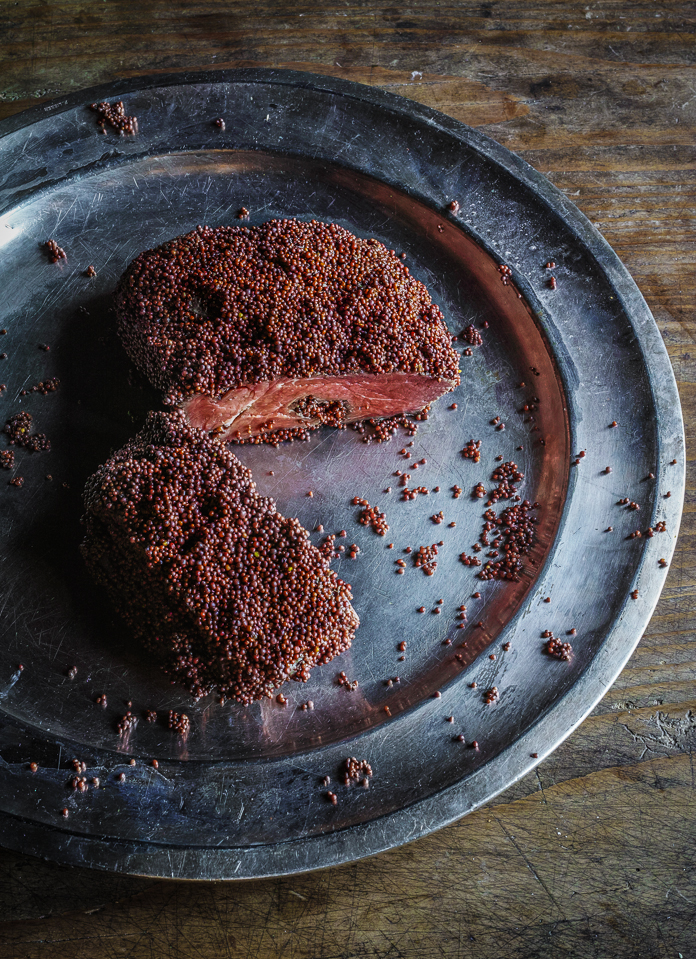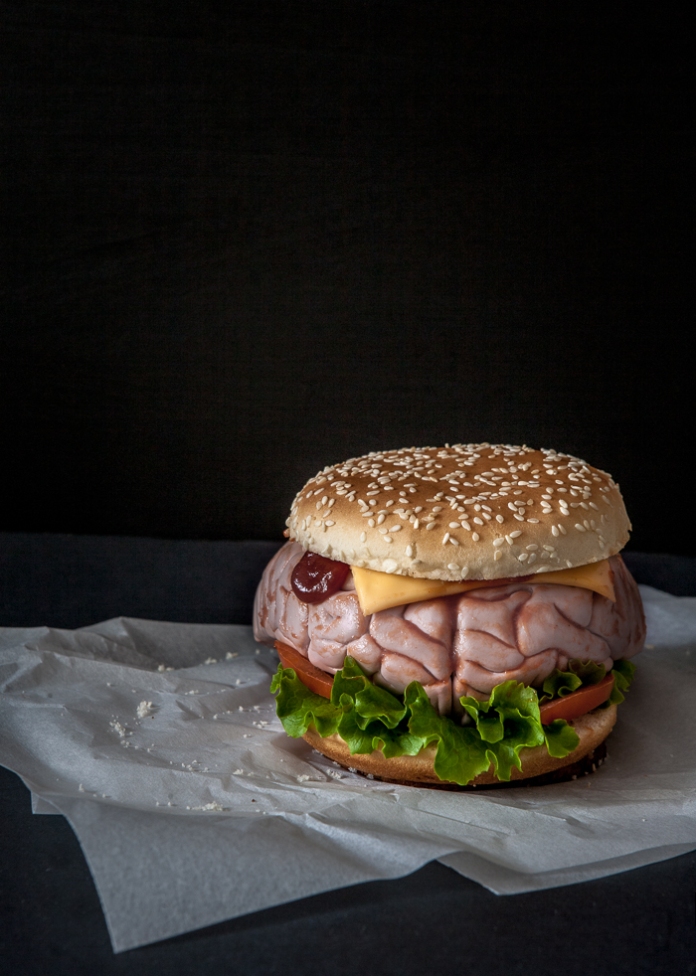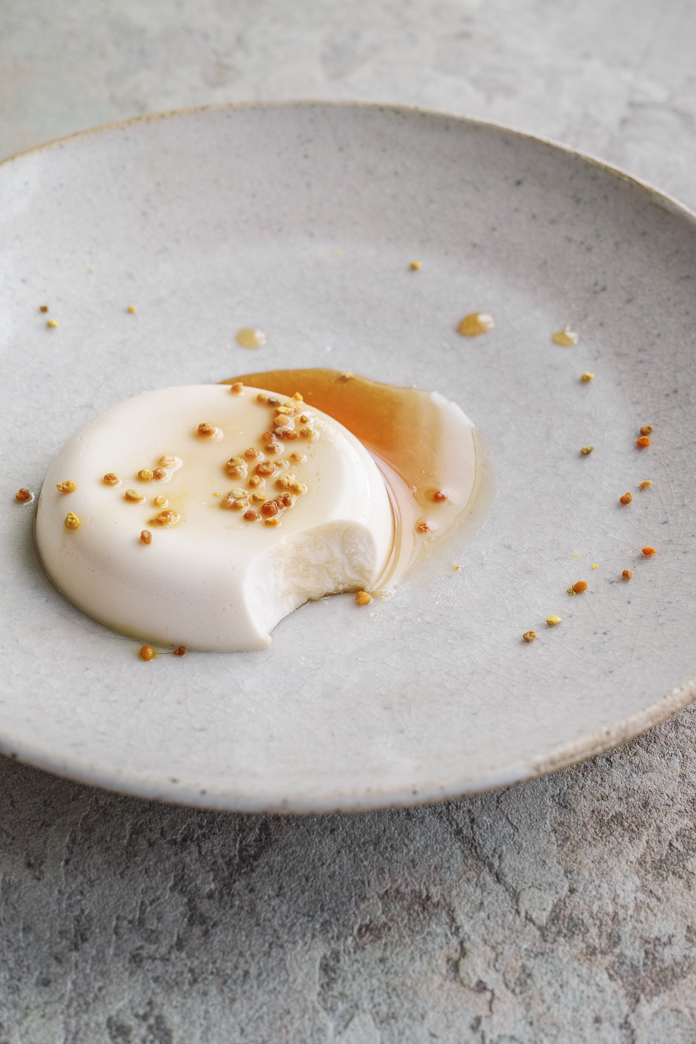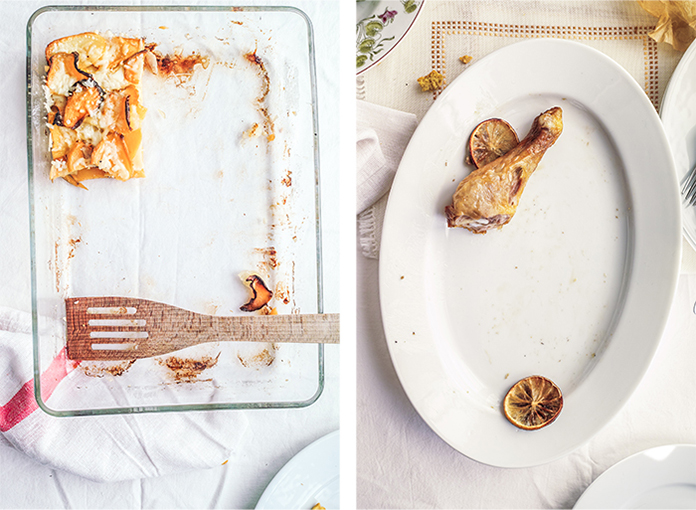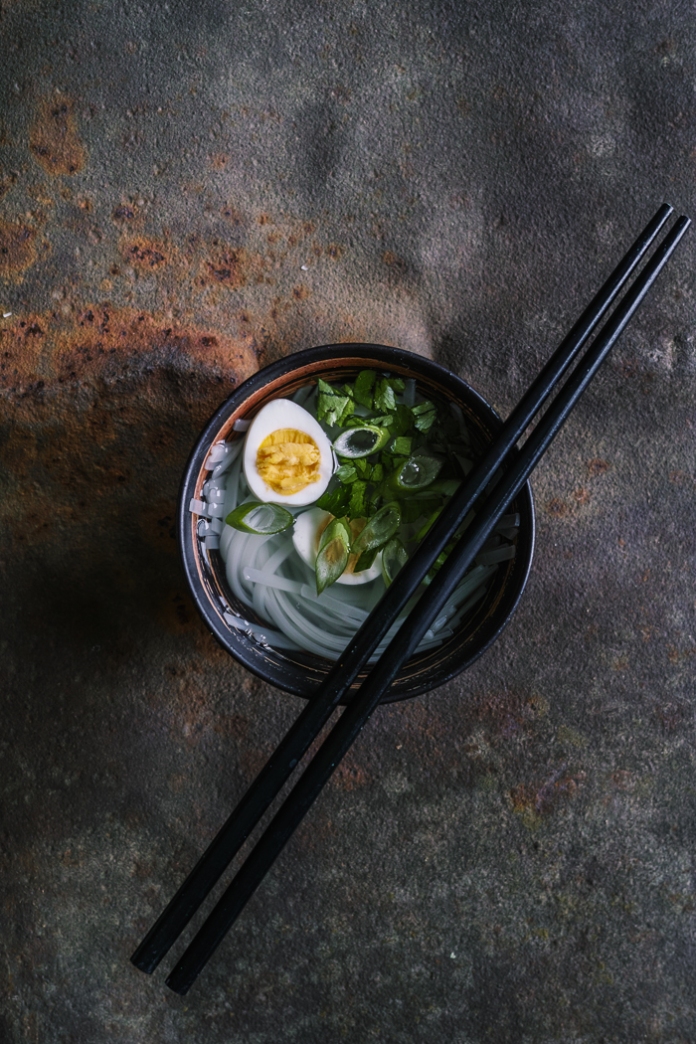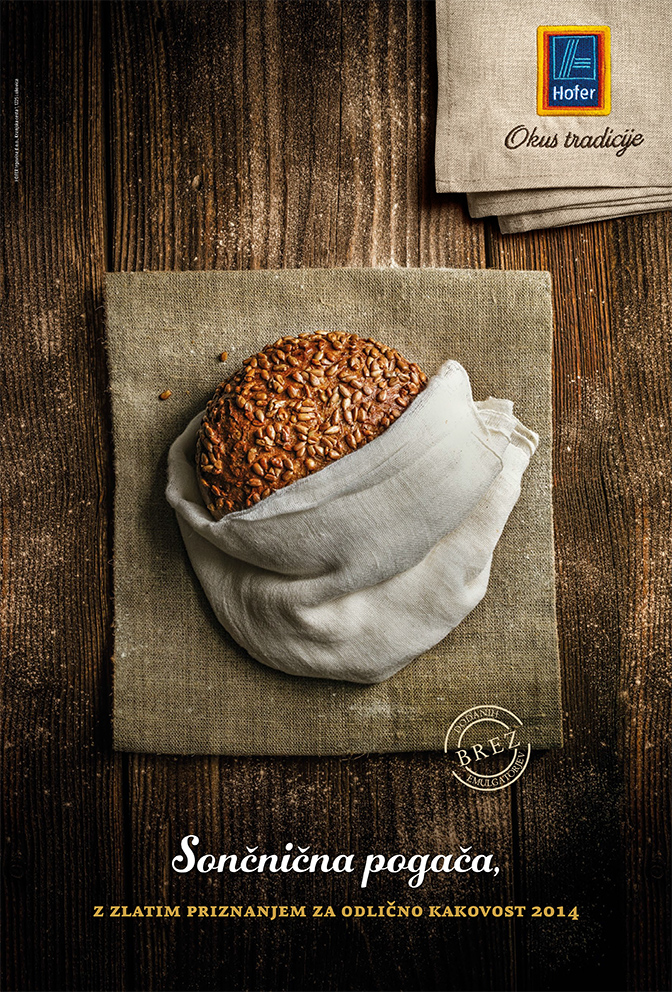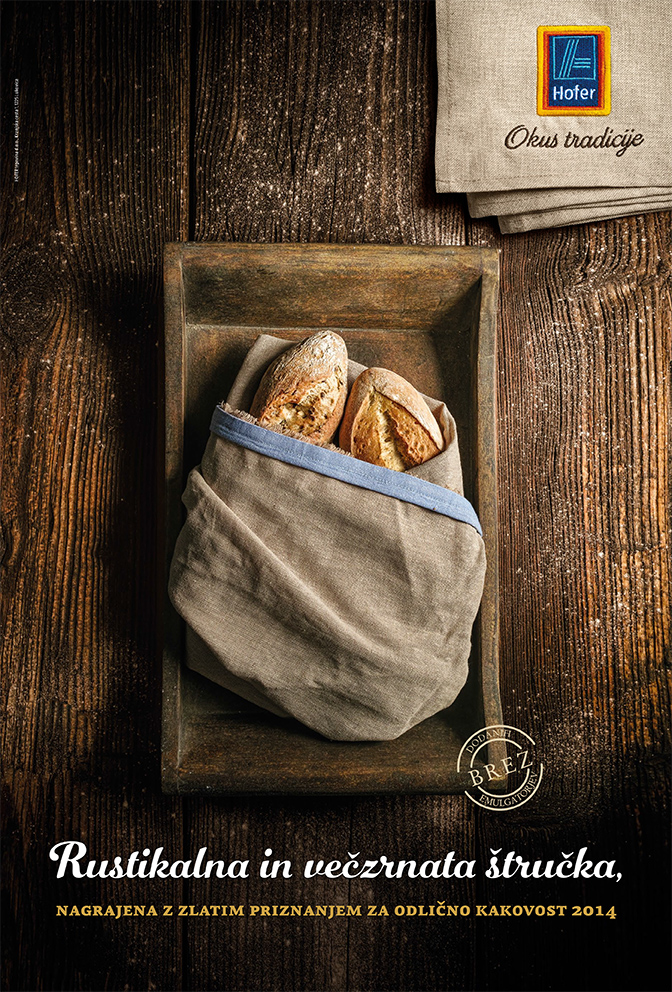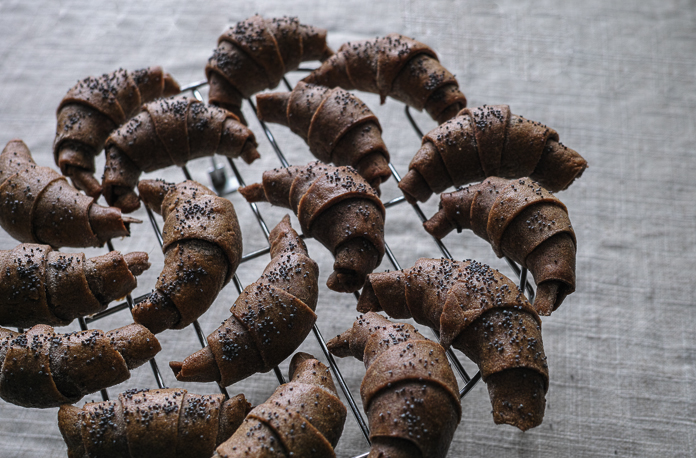You might have heard about Skaručna before. Not the village, after which the restaurant is named after, but the restaurant itself takes all the fame. Their fame is attributed to delectable homemade food presented as a feasting marathon. But the fact is that Skaručna is much more than big pieces of meat and great wine. It’s a story of passion, dedication and love. Sounds almost too cheesy for a place with custom made cast iron 1m long baking trays. Yes, the meat sizes are unconventional, for example steaks can be thick up to 8 cm, and their famous home speciality is whole leg of ox, big enough to feed 15 people. The recipe is a creation of Pulinoga, Slavko Žagar Sr., who started with the restaurant.

Today the man of the show is Slavko Žagar Jr. A waiter, cook, entertainer, gardener and interior decorator. He lives with the restaurant his entire life. And this is what Skaručna looks like, a big family house with a small garden in the back and a big clay furnace in the center of the house. Slavko sr. took junior to walk with him around nearby farmers very early, to teach him to recognize the good stuff and introduce him to his friends. Therefore Slavko jr. knows what is really good, knows what he wants and how it should be done. A perfectionist. He wants to know the people he works with, not only how they work, but also what they are like as a person. Trust is an important element when you bring somebody in a family legacy. And the farmers trust him as well, so they give him the best, what they make for themselves and their families, premium stuff. Like the cheese from Čadrg, or salami or special editions of wine. His honey beer is produced by a guru of beer making who is also a painter and jujitsu master.

He also has a very special relationship with winemakers as special as he is. The friendly visits to their vineyards are a place for inspiration. He appreciates viners who make authentic and natural vines. Orange vines for example or dry wine from dried teran grapes,… Viners who are more artististic souls and search for something special in authenticity. Jožko Gravnar and Stanko Radikon, the beginers and masters who taught the others. Dario Prinčič, Franco Terpin, Joško Renčel and Valter Mlečnik to name a few more of his dear friends he collaborates and learns from. Gravnar is also the master of salami making, and Slavko his apprentice learning the craft. Salami are still his private project, but a real craft, for which the restaurant closes for 4 days each year. Meat is entirely hand cut and prepared with traditional methods, the long and hard way to achieve the desired texture and flavour.
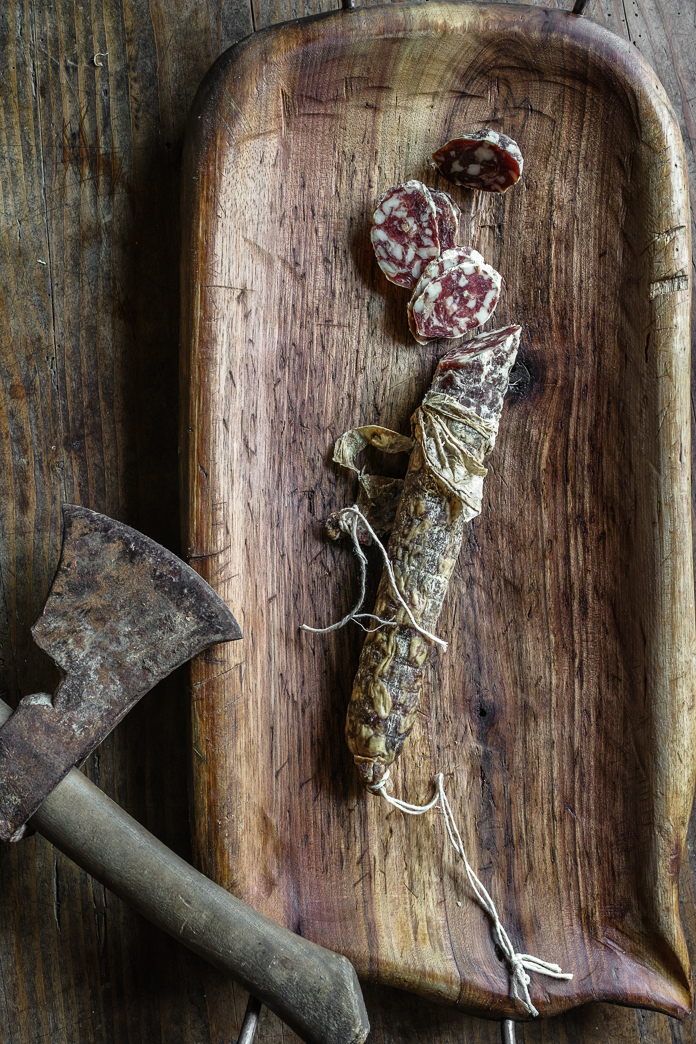
But it’s just the things that time won’t let him make, that he outsources. The rest is truly homemade at Skaručna. The garden behind the house supplies Slovene garlic, herbs, lettuce and some seasonal vegetables. There is also a collection of sharp chillies from travels growing in the garden, which give spiciness to famous “mean soup”. They produce seasonal pickles by themselves: wild prunes from the garden, local asparaguses and various veggies, depending on what is growing (last year’s baby beets were a hit). And on top of that, there is also an array of homemade schnappses. Each as artisanal as it get in its own direction. The walnut schnapps takes 3 years to make. First picked, soaked for 1 year, and then left in oak barrels for 2 more years. Raspberry schnapps is nothing similar to what they usually serve, this one is textured like a smoothie with a zing, a proper lady schnaps. Slavko even makes 4 different mustards by himself and ferments turnip for the restaurant. Always busy and never runs out of projects to do. Right now the garden is pinned with baby fruit trees, which are all old almost forgotten local species – promising more homemade produce in the future. Besides, it’s not the usual kind of small orchard. You pass a vintage curiosities museum to reach it, and it ends with green labyrinth and a completely natural puddle. Another project for which he was inspired by viner Jožko Gravnar. No fountains there to make you wow, it’s the food that makes you say that.

The meat is a category for itself. They get the meat from trusty farmers and is prepared by their butcher, who cuts and prepares it according to specific instructions. The meat is then left at butcher’s for a month, then another month at Skaručna, then wrapped tightly in black mustard seeds or marinade for additional 1 month. And in the and roasted in baker’s oven on beech wood, cherry or olive tree or even vines for grilling. Besides the meat, the menu offers plenty of various dishes inspired by local ingredients and tradition. I even think that it’s a place that serves the best trout, carefully smoked and served warm with horseradish cream.

The preparation of food may be strict and precise, but the atmosphere around the house is very cozy and jolly, echoing with Slavko’s distinct laughter, with no pretentiousness over high quality ingredients. The restaurant holds it’s quality relentlessly, but they take good stuff for granted and normal. Not only do they know how to prepare the food, they even serve it the right way. Rather than receiving a ready made plate, each meal is presented at the table to get the taste buds going. Food porn live, whether it is warm bread sliced so that you smell it and see the vapour coming out of it. Or, potatoes sliced in half with butter slowly sliding down the edge of knife. I won’t tell no more, it should be an experience you discover by yourself, and after what you have read here, there is plenty more to find.




